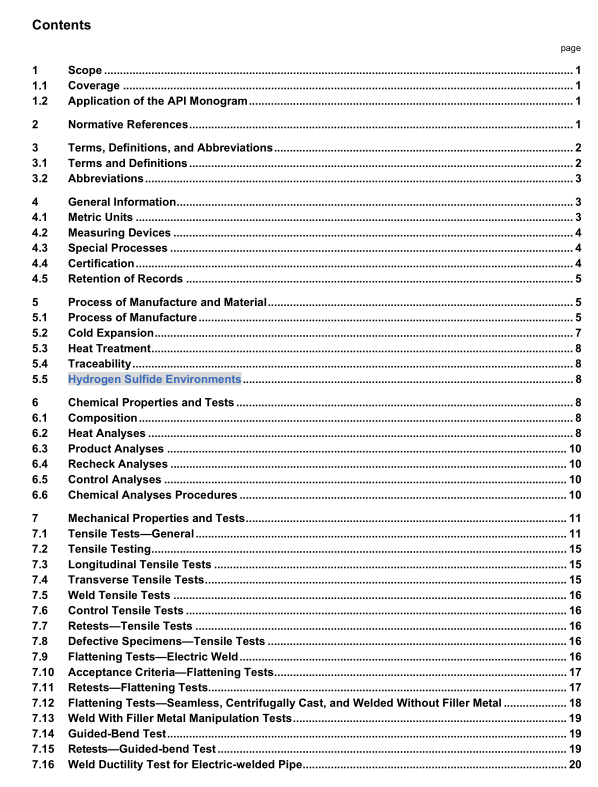API 5L3 pdf – Drop-Weight Tear Tests on Line Pipe

API 5L3 pdf – Drop-Weight Tear Tests on Line Pipe
These procedures describe a recommended method for conducting Drop-Weight Tear Tests to measure the fractureappearance or fracture ductility of the pipe as referenced in API Specification 5L, Specification for Line Pipe.
2Normative References
The following referenced document is indispensable for the application of this document.For dated references, onlythe edition cited applies. For undated references, the latest edition of the referenced document (including anyamendments) applies.
API Specification 5L, Specification for Line Pipe3Abbreviations
For the purposes of this document, the following abbreviations apply.
D/t
diameter-to-thickness ratio
DWTT
Drop-Weight Tear Testpipe wall thickness
T
neglected regions for shear area evaluation
ts
DwTT specimen thickness
4General Information
4.1Apparatus
4.1.1The testing machine may be of any configuration that has sufficient energy to completely break the specimensin one impact.
4.1.2 The velocity of the hammer at impact shall be in the range of 16 ftsec to 30 ft/sec(5 ml/sec to 9 mlsec).
4.1.3 The specimen shall be inserted in the testing machine so that the notch is lined up with the centerline of thehammer tip within 1/16 in.(1.59 mm).The notch should also be centered between the supports of the anvil.
4.1.4 The radius of the anvil supports for the specimen should not be larger than 5/8 in.(15.9 mm).Larger radii havebeen found to contribute to specimen jamming.
4.2Metric Units
Metric conversions of US customary units are shown in parenthesis in the test, figures, and tables. See Annex A formetric conversion factors.
NOTE Drop-Weight Tear Testing pipe with upper shelf Charpy impact energies greater than 200 J (148 f-.b) often results ininvalid tests, making the test method ineffective.
5 Specimens
5.1 Orientation
5.1.1 The specimens shall be removed from pipe such that the length of the specimen is in the circumferential direction of the pipe.
5.1.2 The specimens shall be flattened unless the D/t is less than 40. If the D/t is less than 40, then the center 1 in. to 2 in. (25 mm to 51 mm) may be left unflattened. If buckling occurs, the test results are not valid and replacement tests shall be conducted. Flattening has been observed to decrease the percent shear of the fracture. In the case of a difference between flattened and nonflattened specimen results, or in referee testing, the results from nonflattened specimens shall govern.
5.1.3 The specimens may be removed from the pipe wall by sawing, shearing, or flame cutting with or without machining, provided the dimensions of the finished specimen are within the tolerances shown in Figure 1. NOTE If the specimen is flame cut, it is usually difficult to press in the notch unless the heat-affected zone is removed by machining.









